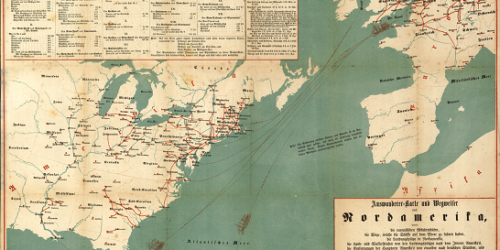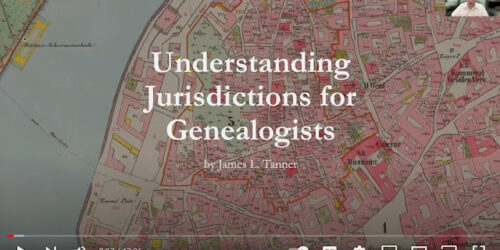Expanded Commentary on the Rules of Genealogy: Rule Nine
Editor’s Note: This article by James Tanner was originally published in the Genealogy’s Star blog site and is used with the author’s permission.
Expanded Commentary on the Rules of Genealogy: Rule Nine
- Rule One: When the baby was born, the mother was there.
- Rule Two: Absence of an obituary or death record does not mean the person is still alive.
- Rule Three: Every person who ever lived has a unique birth order and a unique set of biological parents.
- Rule Four: There are always more records.
- Rule Five: You cannot get blood out of a turnip.
- Rule Six: Records move.
- Rule Seven: Water and genealogical information flow downhill
- Rule Eight: Everything in genealogy is connected (butterfly)
- Rule Nine: There are patterns everywhere
- Rule Ten: Read the fine print
- Rule Eleven: Even a perfect fit can be wrong
- Rule Twelve: The end is always there
Rule Nine may very well be fundamentally the most important of all twelve of the rules. Each family in a family tree with all of its associated documents and information makes a pattern. Documents in an archive or library make a pattern. History is full of patterns. I first began to appreciate these patterns when I worked as a Bibliographer in the University of Utah Library many years ago. During my breaks, I decided to “walk” all the shelves in the library. I started on the top floor and ended up in the lowest basement and looked at every book on every shelf. Coupled with all the work I did in the old paper-based 3″ by 5″ card catalog, I gained a perspective of the overall organization and patterns of that library. It turns out that the same patterns exist in almost all record collections around the world. I soon began to see that everything else fits into a pattern.Now we have the vast library of the internet. Guess what? More patterns. When you start looking at everything around you as falling into patterns, it makes learning about the world a lot more organized and easily understood. Unfortunately, there are a lot of people that never see the patterns. In fact, there are pattern breakers. Some pattern breakers are just ignorant others are intentional.What is a family pattern? Every family unit has a unique pattern made up of cultural, social, religious, biological, economic, and traditional components. Each family blends, like puzzle pieces into the overall pattern of the historic family. Genealogy is essentially the task of fitting each individual into his or her family pattern. Genealogists generally think of families as collections of individuals. I often see this astigmatic view as researchers search for an individual or worse, search over and over again for a specific record such as a marriage, birth, or death record. By focusing on the detail, the researcher loses the perspective of the pattern of the family.
By stepping back and viewing the overall pattern, including the location of each event, you can begin to recognize the place each individual occupies in the family pattern. The identity of a missing piece of the pattern may be contained in adjoining pieces. Even if a particular piece turns up to have been lost or destroyed, the pattern is not broken until there are so many broken and missing pieces that the pattern is no longer discernible.
Those who do not see the patterns never get involved in the process of genealogical research. They are like people who go to an art museum and never look at the paintings or other artwork.






